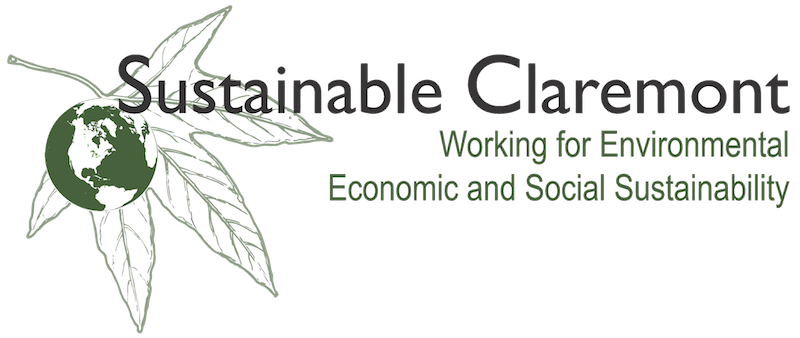For several decades now, Heal the Bay’s beach report cards have told us that after storms most Los Angeles County beaches are not safe to swim. It only takes a quick walk down any beach, especially those near the mouth of the San Gabriel and Los Angeles Rivers to see just how much impact our stormwater runoff and dry-season “urban drool” are having on our coastline. Residents wanting to learn more are invited to Sustainable Claremont’s 103rd Sustainability Dialog on Monday, February 3rd at 7 p.m. at the Pomona College Hahn Building, 420 N. Harvard Ave., Claremont, where Los Angeles County Flood Control District’s Kirk Allen will present on the LA County Safe Clean Water Program.
Some pollutants you can see on our beaches, but many others, like heavy metals and fecal bacteria, you can’t. Dr. Shelley Luce recently shared, “Heal the Bay’s stormwater report shows six years of shockingly minimal progress in cleaning up Los Angeles’ stormwater.” She went on to, “urge officials to take immediate action by strengthening regulations that hold polluters accountable for implementing multi-benefit stormwater projects.” Thanks to the passage of Measure W, many more of those types of projects are on the horizon. In November 2018, more than two-thirds of voters passed Measure W, a comprehensive plan to address how we capture water and how to reduce our reliance on imported water. Now called the Safe Clean Water Program, this annual 2.5 cent per impervious square foot tax for all non-exempt property owners will fund over $250 million dollars annually to build and maintain projects that capture rainfall and storm water and significantly reduce pollutants in our creeks and channels, rivers and reservoirs,ocean and beaches. Not only will this help Los Angeles County cities keep our waterways clean, our beach goers safe, and begin to replenish groundwater supplies, it’ll help us get closer to complying with the Clean Water Act of 1972, a federal mandate requiring that all cities meet National Pollutant Discharge Elimination System (NPDES) permit requirements and the Total Maximum Daily Loads (TMDLs) for pollutants mandated by California’s nine Regional Water Quality Control Boards (RWQCBs).
As stated on the Safe Clean Water program website, this program “continues LA County’s tradition of floodsafety, while protecting water quality within our communities and providing new sources of water for current and future generations. By modernizing our 100-year-old water system, we will better protect public health and our environment, and maximize a cleaner, locally controlled water supply.” So what does this have to do with you? It’s going to take all of us doing our part to capture, clean and make our water safe for everyone. Through the Safe Clean Water program, watershed coordinators will be hired to help each of the nine watershed areas in LA County continue to find and develop feasible projects. These projects will capture rainfall and storm water and advance the water quality, water supply, and community enhancements objectives of the Safe Clean Water program in our region (Claremont’s watershed area as defined by this program is the Upper San Gabriel River). While many initial projects will likely be large to address major pollutants at the watershed scale, the county is also committed to smaller community level projects that will help commercial, industrial, institutional, residential and municipal parks and public spaces to control pollutants at their sources. The Safe Clean Water program will protect public health and result in the creation of greener communities with less concrete and more parks, open space, and recreational opportunities throughout the county. Please join us at this important Dialog.
Demystifying Sustainability is an initiative of Sustainable Claremont (susustainableclaremont.org).
